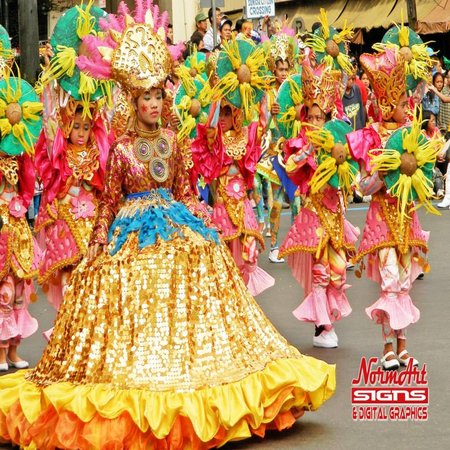Panagbenga Festival

Panagbenga Festival is held yearly during the month of February. The celebrations are held for over a month and peak periods are the weekends. The Panagbenga Festival showcases the many floral floats and native dances. The fragrant smells that could be presently teasing olfactory senses are probably less from the now-dried flowers from Valentine's Day than air floating all the way from Baguio City. At this time of year, the City of Pines is almost surely in flower fury over Panagbenga festival, the city's biggest festival.
Panagbenga is a kankanaey term for "a season of blooming." It is also known as the Baguio Flower Festival, a homage to the beautiful flowers the city is famous for as well as a celebration of Baguio's re-establishment. Since February 1995, it has been held to help Baguio forget the 1990 earthquake that distressed much of the city.
Often a Cañao is an undertaken to kick-off & celebrate the occasion. A Cañao is a dance that also is regularly performed at special occasions such as fiestas. In this two-person dance, the men hang blankets usually woven with an indigenous pattern or design-over each shoulder. The woman wraps a single similar blanket around her. The man leads her and dances in a circle with a hop-skip tempo to the beat of sticks and gongs. The dance must continue until the viewers decide to honor the dancers twice with a shout of "Ooo wag, hoy! hoy!" Once this has happened, the dancers can stop. It is an honor to be invited to join the dance, and elders and other respected members of the community are expected to join in at every occasion.
HOW TO GET TO BAGUIO CITY
Baguio City is located some 250 kilometers from Metro Manila and is elevated 1,450 meters above sea level. Buses are the usual transportation of choice when going to the city and travel time usually clocks in at six hours (from Manila). There used to be flights in and out of the city in years past, but is has been discontinued indefinitely. The city can also be accessed through the Ilocos Region and other parts of Luzon through various provincial bus lines and vans.
By Public Transportation.
Since many people like traveling to Baguio, you won’t run out of buses to take. Currently, there are 6 bus liners with routes that will take you to Baguio. Their rates differ, but they usually range around the P 450.00 mark for regular fares.
If you want to travel in style, Victory Liner offers a Deluxe Express trip that may even take you there sooner than you expected. It also offers amenities on board like Free WiFi, complimentary bottled water and snacks, as well as a bathroom on board.
If it’s more convenient for you, Genesis Bus has trips to Baguio from their Cubao and Avenida terminals:
Cubao to Baguio: hourly trips from 3 AM to 7 PM
Avenida to Baguio: hourly trips from 11 PM to 9 PM
Note that the travel time for night trips are approximately 5 to 6 hours, while the travel time for day trips can take up to 7 hours. Other bus liners with routes to Baguio are: Dagupan Bus, Dangwa Transit, Philippine Rabbit, and Saulog Bus.
By Private Car
youou have to pass through NLEX (North Luzon Express Way) then SCTEX (Subic-Clark-Tarlac Expressway). Upon reaching Tarlac City exit, turn left and drive a good 10 km more until you reach MacArthur Highway. Travel time is about 4-5 hours